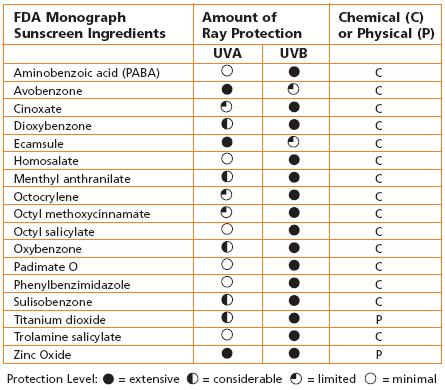The answer appears to be yes, going by this table compiled by the Environmental Protection Agency featuring chemical and physical sunscreen ingredients as well as the type and amount of ray protection that they provide and their class.
Do you see what I see? Zinc Oxide provides the best broad spectrum protection against both UVA and UVB rays! It looks to be better than Ecamsule, which is commonly known by the trade name Mexoryl. Which means, the industry claims that Mexoryl is the most potent photostable anti-aging sun filters for UVA and UVB rays may not be so true afterall. In fact, I found an article refuting that claim and stating that Mexoryl is an inferior sunscreen active ingredient compared to zinc oxide although I have to qualify that the source is a company that sells sunscreen using zinc oxide.
I find this information both to be intriguing as well as perplexing. Can this be 100% true? Is this part of the ongoing debate between physical sunblocks vs chemical sunscreens?
For those who are confused, physical sunscreens contain either Zinc Oxide or Titanium Dioxide and form a film on top of the skin that reflects or scatters UV light while chemical sunscreens absorb UV rays before they can do any damage. But whether you pick a physical or chemical sunscreen, the most important consideration is that your formula is broad spectrum and offers protection against both UVA and UVB rays. And you may like to know that UVB rays are the primary cause of skin cancer while UVA rays cause wrinkling, skin sunspots and are also now implicated in skin cancer.
More research is definitely required to find out if Zinc Oxide is indeed better than Mexoryl but my first thoughts were, if this is true, my earlier entry about Mexoryl sunscreens no longer holds water. And my second thoughts are, my Keys Solar RX SPF30 Sunblock is good and I can junk my Mexoryl chemical sunscreens!


No comments:
Post a Comment
Note: Only a member of this blog may post a comment.